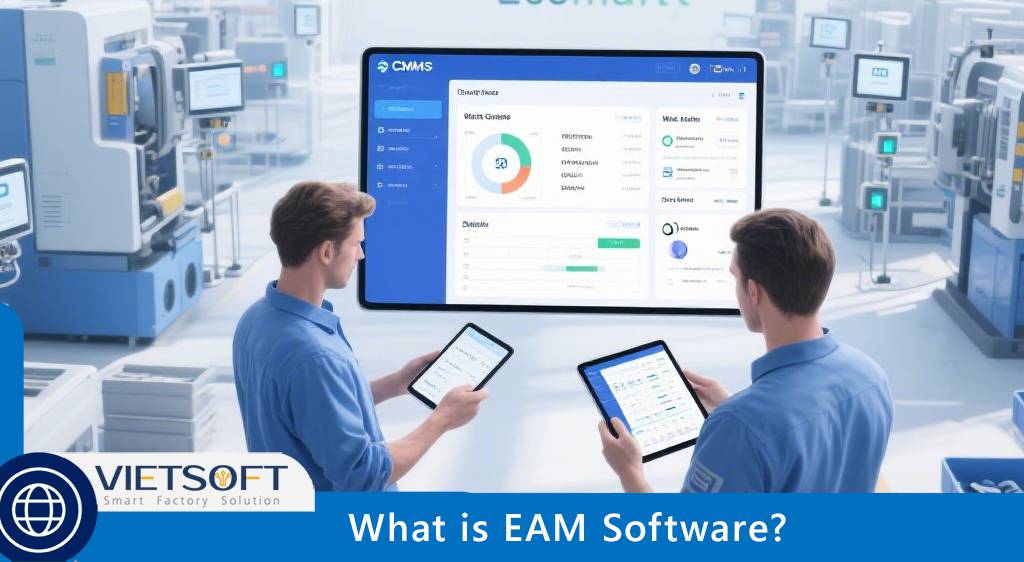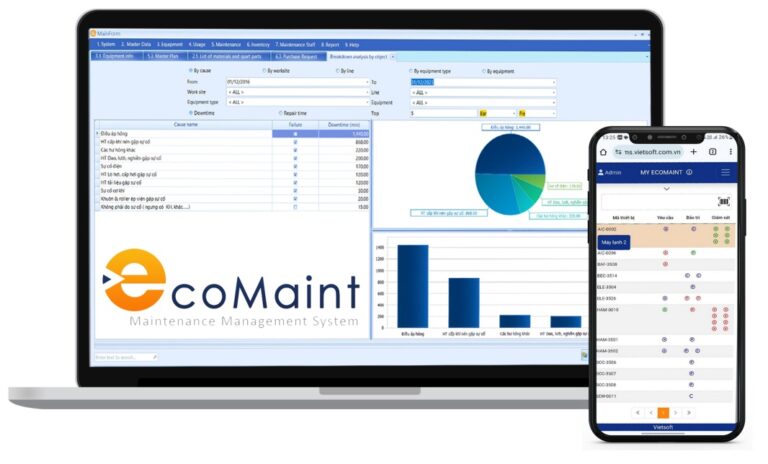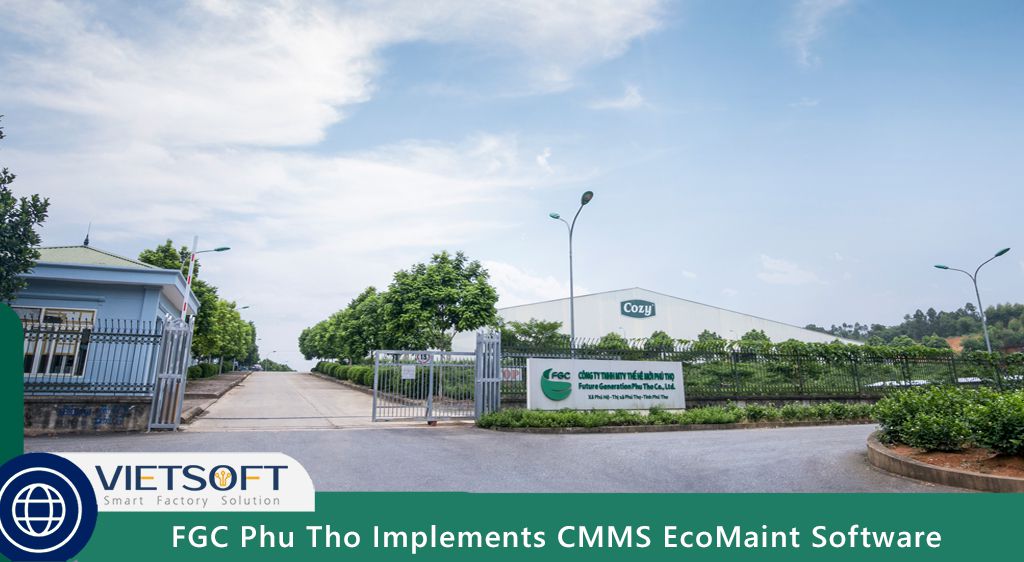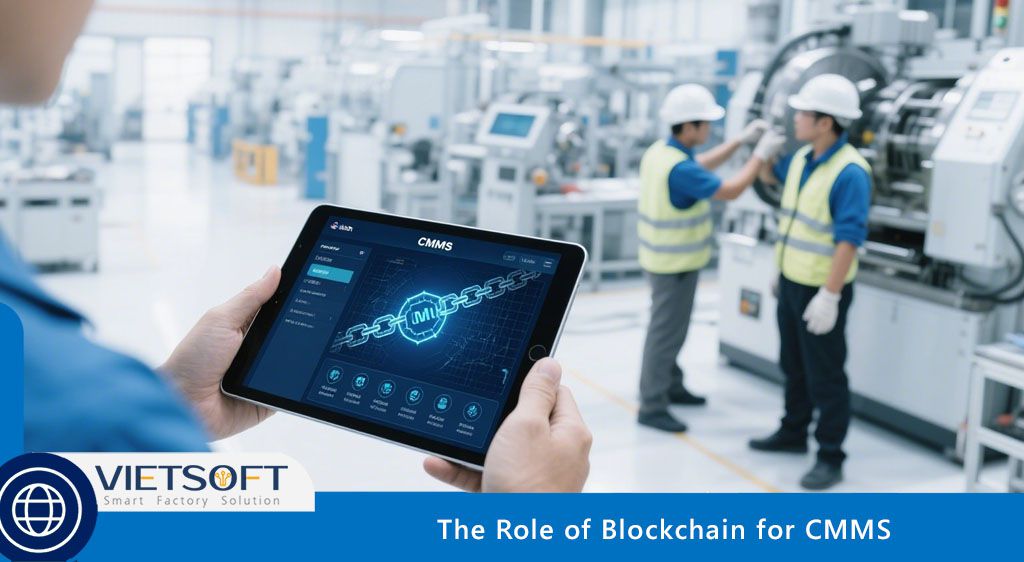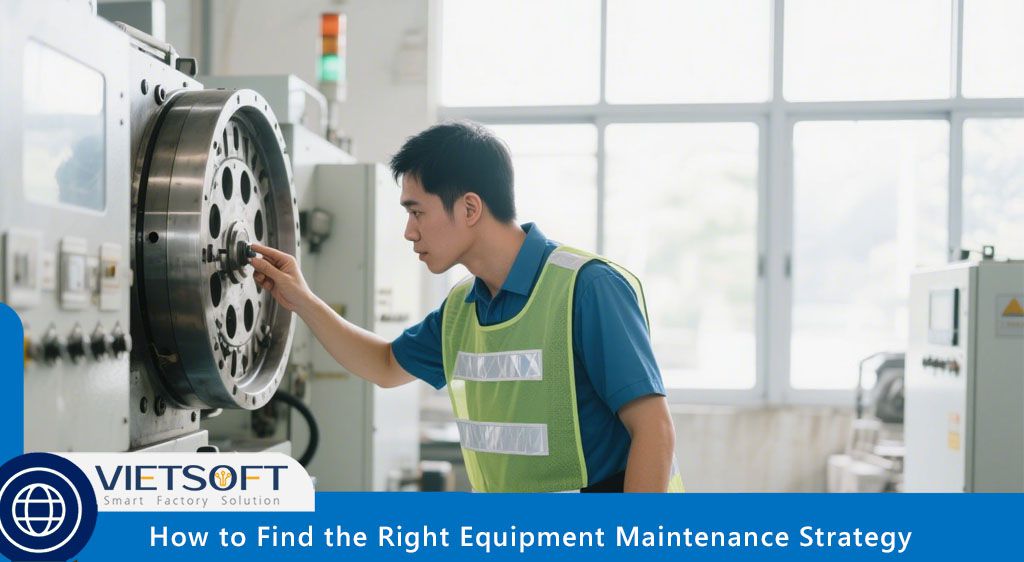Enterprise Asset Management (EAM) software is a sophisticated system designed to manage an organization’s physical assets—such as machinery, equipment, vehicles, and infrastructure—across their entire lifecycle. Unlike traditional maintenance tools, EAM goes beyond reactive repairs, offering a strategic, data-driven approach to asset management. It encompasses planning, procurement, operation, maintenance, and disposal, ensuring assets deliver maximum value while minimizing costs and risks.
In industries like manufacturing, energy, transportation, and healthcare, EAM software is a game-changer. It provides a centralized platform to track asset performance, schedule maintenance, manage inventory, and integrate with other business systems like ERP. By leveraging technologies such as IoT, AI, and cloud computing, EAM empowers organizations to shift from reactive to proactive and predictive maintenance, enhancing operational efficiency and asset longevity.
I. Why is EAM Software Important?
EAM software is critical for asset-intensive organizations because it:
Maximizes Asset Performance: Ensures assets operate at peak efficiency, reducing downtime and boosting productivity.
Reduces Costs: Minimizes emergency repairs, optimizes maintenance schedules, and extends asset lifespans.
Ensures Compliance: Tracks regulatory requirements and safety standards, reducing risks and penalties.
Enhances Decision-Making: Provides data-driven insights through analytics, helping managers make informed choices.
Improves Collaboration: Centralizes asset data, enabling seamless communication across departments.
By adopting EAM, businesses can achieve a competitive edge, especially in Vietnam’s rapidly growing industrial sector, where efficient asset management is key to staying ahead.
II. EAM vs. CMMS: What’s the Difference?
A common question is how EAM differs from CMMS (Computerized Maintenance Management System). While both systems aim to improve asset management, their scope and functionality differ significantly.
1. Key Differences Between EAM and CMMS
Scope:
CMMS: Focuses on the maintenance phase, managing tasks like work orders, repairs, and preventive maintenance.
EAM: Covers the entire asset lifecycle, from procurement and installation to operation, maintenance, and disposal.
Functionality:
CMMS: Includes work order management, inventory tracking, and preventive maintenance scheduling.
EAM: Extends to asset lifecycle planning, financial tracking, compliance management, and integration with ERP systems.
Use Cases:
CMMS: Ideal for small to medium-sized businesses or single facilities focused on maintenance efficiency.
EAM: Suited for large, asset-intensive organizations needing enterprise-wide visibility and strategic planning.
Integration:
CMMS: May integrate with IoT or procurement tools but is primarily maintenance-focused.
EAM: Designed for cross-departmental integration with ERP, HR, and financial systems.
For instance, a CMMS might help a factory schedule regular equipment inspections, while an EAM system would also track the equipment’s depreciation, plan its replacement, and ensure compliance with Vietnam’s safety regulations.
2. Comparison Table: EAM vs. CMMS
Feature | CMMS | EAM |
|---|---|---|
Scope | Maintenance phase only | Full asset lifecycle |
Key Features | Work orders, preventive maintenance | Lifecycle planning, compliance, analytics |
Typical Users | Maintenance teams | Multiple departments (finance, ops, etc.) |
Integration | Limited, maintenance-focused | Broad, enterprise-wide integrations |
Best For | Small to mid-sized operations | Large, asset-intensive organizations |
While some advanced CMMS solutions offer EAM-like features, EAM systems provide a broader, more strategic approach, making them ideal for complex operations in industries like power generation or manufacturing in Vietnam.
III. Core Features of EAM Software
EAM software is packed with features that streamline asset management and drive operational excellence. Below are the key components that define a modern EAM system:
1. Asset Inventory and Tracking
EAM systems maintain a centralized asset registry that catalogs details like asset ID, location, manufacturer, purchase date, and warranty information. Technologies like barcode scanning, RFID tags, or GPS trackers enable real-time monitoring of asset location and status. For example, a logistics company in Vietnam can track its fleet’s location and maintenance history, ensuring timely servicing and reducing downtime.
2. Work Order Management
EAM software automates the creation, assignment, and tracking of work orders. It prioritizes tasks, sends mobile notifications to technicians, and logs full asset histories. This streamlines maintenance workflows, ensuring tasks are completed efficiently. For instance, a technician in a Hanoi factory can receive a work order on their mobile device, access repair instructions, and update progress in real-time.
3. Preventive Maintenance Scheduling
Preventive maintenance is a cornerstone of EAM, scheduling tasks like inspections and part replacements based on manufacturer guidelines or historical data. Automated reminders and work orders help reduce unexpected failures. For example, a power plant in Ho Chi Minh City can schedule turbine inspections to avoid costly outages.
4. Predictive Maintenance and Condition Monitoring
By integrating with IoT sensors, EAM systems monitor real-time asset data (e.g., vibration, temperature) to predict potential failures. Alerts are triggered when anomalies are detected, allowing proactive interventions. A Vietnamese oil and gas company, for instance, can use predictive maintenance to address equipment issues before they disrupt production.
5. Asset Performance Monitoring and Analytics
EAM systems track key performance indicators (KPIs) like uptime, mean time between failures (MTBF), and maintenance costs. Advanced analytics identify trends, optimize strategies, and uncover root causes of issues. Dashboards provide managers with clear insights, enabling data-driven decisions to enhance asset reliability.
6. Spare Parts and Inventory Management
EAM software tracks spare parts, manages stock levels, and automates reordering to prevent shortages or overstocking. Linking parts usage to work orders helps control costs. For example, a manufacturing plant in Da Nang can ensure critical spare parts are available for emergency repairs, minimizing downtime.
7. Compliance and Safety Management
EAM systems support regulatory compliance by scheduling inspections, managing permits, and documenting safety actions. This is critical in industries like nuclear power or healthcare, where compliance with safety standards is non-negotiable. In Vietnam, EAM can help factories meet local environmental and safety regulations, reducing risks and penalties.
IV. Integration with Other Systems
EAM software integrates with ERP, accounting, and IoT platforms to ensure seamless data flow. For example, syncing with an ERP system allows a Vietnamese utility company to align maintenance schedules with financial planning, optimizing resource allocation.
Unique EAM Features
Asset Lifecycle Management: Tracks total cost of ownership, depreciation, and end-of-life planning, supporting strategic capital decisions.
Compliance Management: Ensures adherence to industry standards, such as Vietnam’s TCVN regulations, by automating compliance tasks and documentation.
These features make EAM a comprehensive solution for managing complex asset portfolios, especially in Vietnam’s industrial landscape.
V. Benefits of Implementing EAM Software
Implementing EAM software delivers transformative benefits for organizations. Here’s how it adds value:
1. Higher Asset Reliability and Uptime
EAM’s preventive and predictive maintenance strategies reduce unplanned downtime, ensuring assets operate reliably. For example, a Vietnamese textile manufacturer can maintain looms to avoid production halts, boosting output.
2. Extended Asset Lifespan
Timely maintenance prevents premature wear, extending asset life and delaying costly replacements. A power plant can extend turbine lifespans, maximizing return on investment (ROI).
3. Lower Maintenance Costs
By preventing emergency repairs and optimizing schedules, EAM reduces maintenance expenses. For instance, a logistics company can avoid rush orders for parts, saving costs.
4. Improved Maintenance Efficiency
Automated work orders, mobile access, and clear procedures streamline workflows, boosting technician productivity. A maintenance team in Vietnam can complete tasks faster, reducing operational delays.
5. Optimized Inventory Management
EAM tracks spare parts usage and forecasts needs, preventing stockouts or overstocking. This ensures efficient resource use, critical for Vietnam’s manufacturing sector.
6. Regulatory Compliance and Safety
EAM automates compliance tasks, such as inspections and audits, ensuring adherence to regulations. This is vital for industries like healthcare in Vietnam, where patient safety depends on equipment reliability.
7. Centralized Data and Collaboration
EAM provides a single source of truth, enabling cross-departmental collaboration. For example, finance and maintenance teams in a Vietnamese factory can access the same asset data, improving decision-making.
8. Competitive Advantage
Efficient asset management enhances product quality, reduces costs, and improves customer satisfaction, giving businesses a market edge. In Vietnam’s competitive industrial sector, EAM can differentiate a company from its rivals.
VI. Industries Using EAM Software in Vietnam
EAM software is widely adopted in asset-intensive industries, particularly in Vietnam, where industrial growth is accelerating. Key sectors include:
Manufacturing: EAM reduces downtime and optimizes equipment maintenance, boosting productivity in factories across Hanoi and Ho Chi Minh City.
Energy and Utilities: Power plants and oil and gas facilities use EAM to ensure infrastructure reliability and compliance with safety standards.
Transportation and Logistics: Fleet operators in Vietnam leverage EAM to manage vehicle maintenance, reducing costs and improving efficiency.
Healthcare: Hospitals use EAM to maintain medical equipment, ensuring patient safety and regulatory compliance.
Government and Public Sector: EAM helps manage public infrastructure like roads and buildings, enhancing service delivery and cost efficiency.
As Vietnam’s economy grows, EAM is becoming essential for industries aiming to modernize and compete globally.
VII. Modern Technologies Shaping EAM Software
EAM systems are evolving with cutting-edge technologies, making them more powerful and efficient:
Internet of Things (IoT): Sensors provide real-time data on asset conditions, enabling predictive maintenance. For example, a Vietnamese factory can monitor machine vibrations to prevent failures.
Artificial Intelligence (AI) and Machine Learning (ML): AI analyzes data to predict failures and optimize schedules, while ML identifies patterns for continuous improvement.
Digital Twins: Virtual replicas of assets allow teams to simulate scenarios and test maintenance strategies without disrupting operations.
Cloud-Based EAM: Offers scalability, accessibility, and cost-effectiveness, ideal for Vietnam’s growing businesses.
Mobile Workforce Management: Technicians can access work orders and update tasks via mobile apps, improving efficiency in remote or large facilities.
These technologies make EAM systems indispensable for modern asset management, particularly in Vietnam’s tech-driven industrial sector.
VIII. Implementing EAM Software: Challenges and Solutions
Implementing EAM can be complex, but solutions like CMMS EcoMaint address common challenges:
Challenge: Resistance to Change
Solution: CMMS EcoMaint offers an intuitive interface and comprehensive training, ensuring smooth adoption by teams in Vietnam.
Challenge: Data Management
Solution: EcoMaint provides a centralized platform with robust security, streamlining data organization and access.
Challenge: Integration with Existing Systems
Solution: EcoMaint integrates seamlessly with ERP and other systems, ensuring data consistency across departments.
Challenge: Scalability
Solution: EcoMaint’s cloud-based platform scales with business growth, accommodating new assets and users.
By addressing these challenges, CMMS EcoMaint empowers Vietnamese businesses to implement EAM effectively, optimizing asset management and driving growth.
IX. Why Choose CMMS EcoMaint for EAM?
For businesses in Vietnam seeking a robust EAM solution, CMMS EcoMaint stands out as a user-friendly, scalable, and cost-effective option. Designed to streamline asset management, EcoMaint offers:
Centralized Asset Management: Track and manage assets across multiple locations with a single platform.
Predictive Maintenance: Leverage IoT and analytics to prevent failures and reduce downtime.
Mobile Access: Empower technicians with real-time data and work order management via mobile devices.
Seamless Integration: Connect with ERP and financial systems to align maintenance with business goals.
Compliance Support: Ensure adherence to Vietnam’s regulatory standards with automated tracking and reporting.
To learn more about how CMMS EcoMaint can transform your asset management strategy, visit Enterprise Asset Management. Discover how this solution can help your business reduce costs, improve efficiency, and stay competitive in Vietnam’s dynamic market.
X. The Future of EAM Software
The future of EAM is bright, with advancements in AI, IoT, and cloud computing driving innovation. In Vietnam, where industries are rapidly modernizing, EAM systems will become increasingly critical for:
Predictive Analytics: AI-driven insights will enhance failure prediction and maintenance planning.
Sustainability: EAM will support eco-friendly practices by optimizing energy use and reducing waste.
Global Competitiveness: Vietnamese businesses using EAM will gain an edge in quality, efficiency, and innovation.
By adopting EAM software like CMMS EcoMaint, organizations can future-proof their operations, ensuring long-term success in a digital world.
XI. Conclusion
Enterprise Asset Management (EAM) software is a transformative tool for managing physical assets across their lifecycle. By integrating advanced features like predictive maintenance, asset tracking, and compliance management, EAM empowers businesses to optimize performance, reduce costs, and stay compliant. In Vietnam’s fast-growing industrial landscape, solutions like CMMS EcoMaint offer a tailored approach to EAM, helping businesses achieve operational excellence and competitive advantage.
Whether you’re in manufacturing, energy, or logistics, understanding what EAM software is and leveraging its capabilities can unlock significant value. Explore how CMMS EcoMaint can elevate your asset management strategy by visiting Enterprise Asset Management today. Embrace EAM to drive efficiency, reliability, and growth in your organization.

